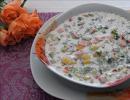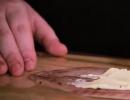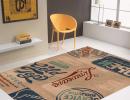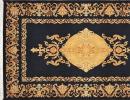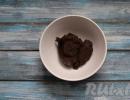Journal of Doe Children's Health. Algorithm for designing and maintaining a preschooler’s health journal Form of a children’s health journal in kindergarten
Anna Medvedeva
Journal of children's health at preschool educational institutions
LIST CHILDREN
No. LAST NAME CHILD’S NAME HEIGHT BEGINNING OF THE YEAR WEIGHT BEGINNING OF THE YEAR HEIGHT END OF THE YEAR WEIGHT END OF THE YEAR
DISPENSARY GROUP
Basic dimensions of tables and chairs for children younger and early age and preschool age
Growth group
children(mm) Furniture group Table height Chair height
Up to 850 00 340 180
Over 850-1000 0 400 220
From 1000-1150 1 460 260
From 1150-1300 2 520 300
From 1300-1450 3 580 340
From 1450-1600 4 640 380
SEATING AT TABLES
1 TABLE 2 TABLE
3 TABLE 4 TABLE
PLAN OF HARDENING PROCEDURES
1. Ventilation of playrooms and bedrooms throughout the year.
2. Lightweight clothing:
In the summer, walking barefoot and wearing shorts;
-in the autumn-winter period:
For girls - a light dress with short sleeves, socks;
For boys - short sleeve shirt, shorts, socks.
3. Washing children tap water all year round (face, neck, arms up to the elbows).
4. Washing feet in spring, summer, and autumn.
5. Air baths:
In the summer, sleep without T-shirts;
In winter, during undressing and dressing before and after sleep.
6. Walking in the fresh air.
7. Walking on the floor barefoot.
8. Sanitation of the oral cavity.
9. Corrective gymnastics after sleep.
10. Mouth rinse.
11. In the hot season, general hygienic baths, games with water at t +26 C; + 28 C.
Barefoot
Barefoot access only healthy children.
For the first 7-10 days they wear socks, for the next 7-10 days they take off the socks for 3 minutes. Subsequently, every 2 days we add 1-2 minutes of barefoot walking each time. Gradually, the time spent barefoot is increased to 40-45 minutes.
Gymnastics after sleep
Conducted in bed (for arms, legs, stretching)-daily.
Planning hardening procedures in preschool educational institutions
According to the Methodological Recommendations for Hardening children in preschool institutions approved by the USSR Ministry of Health on June 16, 1980 No. 11-49/6-29, responsibility for the correct organization of hardening work children are borne by the director and doctor serving the preschool educational institution.
All used in preschool educational institutions health methods must be approved by a pediatrician, and hardening procedures must be carried out under the supervision of a medical professional.
Before starting hardening procedures, it is necessary to obtain written consent from the parents of each child to carry out hardening.
When organizing hardening procedures in a preschool educational institution, it is important to follow the following recommendations.
Before the start of hardening activities, the teacher conducts a conversation with preschoolers about the benefits of hardening. The medical worker talks with the parents of the pupils, explains to them the need, goals and objectives of such events.
A comprehensive plan of hardening procedures is drawn up (Appendix 1, which is approved by the pediatrician and the director of the preschool educational institution.
Daily hardening procedures are carried out only after the child has been examined by a medical professional; a corresponding note is made in magazine (Table 1)
During the hardening process, the sequence in increasing the volume of intensity of exposure is strictly observed in accordance with the Comprehensive Plan of Hardening Procedures.
Table 1
Magazine admission to hardening procedures
Child's full name Year of birth Examination data (body temperature, well-being, emotional state, pharynx, etc.) Mark of admission to the procedure Nurse’s signature
If a child missed the hardening stage due to illness, then after complete recovery procedures are resumed from the very beginning.
Hardening is carried out by a teacher familiar with the recommendations and the Comprehensive Plan of Hardening Procedures, under the supervision of a medical professional. Data about the event that took place is entered into Magazine (Table 2).
table 2
Magazine control over hardening procedures
Date Group Type of hardening Water temperature Procedure time Nurse’s signature
The medical worker measures the water temperature with a thermometer in the ladle and adjusts the water temperature to the required standard according to the Comprehensive Plan of Hardening Procedures.
While the teacher carries out the hardening procedure, the children are in the group under the supervision of an assistant teacher.
The nurse checks the accuracy and thoroughness of the procedures, monitors your well-being and reaction children.
The temperature conditions during hardening are given in Appendix 2.
To organize hardening procedures in a room - a group room, shower, etc., the following is required equipment:
children's furniture (chairs);
banquette
ladder, stepladder;
rugs – rubber, wool, flannel, terry;
bath-shower with wooden grate (ribbed board) at the bottom;
ladle for temperature control in the shower hose;
water thermometer, designed to control the temperature of water;
individual towels, marked for each child, 2 pcs.
Annex 1
Comprehensive plan of hardening procedures
Week Medium Temperature, °C Composition of students Session time, min. Periodicity
Preparation period
5-6 Air baths 21 and above All groups 3-4
10 2-3 times a day
3-6 Washing feet before bedtime 32 Sanatorium group, children 5-6 years old 1
2 Daily
1-6 Washing hands and face with cold tap water 30 All groups 1 Every morning
1-6 Walking barefoot on the gymnastics track 26 All groups 1-2 Daily after nap
5-6 Pouring feet 32
30 Preparatory group, children 6-7 years old 0.5
Main period
11-12 Air baths 20 and above All groups 5
10 2-3 times a day
7-12 Washing feet before bedtime 31 Sanatorium group, children 5-6 years old 2 Daily
7-12 Washing hands and face with cold tap water 29 All groups 1 Every morning
7-12 Walking barefoot on the gymnastics track
25 All groups 1-2 Daily after nap
11-12 Pouring feet 31
29 Preparatory group, children 6-7 years old 1
2 Daily after nap
Final period
17-18 Air baths 19 and above All groups 8
10-11 2-3 times a day
15-18 Washing feet before bedtime 30 Sanatorium group, children 5-6 years old 1
2 Daily
13-18 Washing hands and face with cold tap water 28 All groups 1 Daily in the morning
13-18 Walking barefoot on the gymnastics track 24 All groups 1-2 Daily after nap
17-18 Pouring feet 19 and above Preparatory group, children 6-7 years old 0.5
1.5 Daily after nap
Appendix 2
16.06.1980 № 11-49/6-29
When carrying out local and general air baths, the following air temperature is recommended: indoors:
Influencing factor Age Local impacts General impacts
Start temperature End temperature Start temperature End temperature
Air Up to 2 years +23оС +20-18оС +23оС +21-20оС
2-3 years +22оС +18-16оС +22оС +20оС
4-7 years +22оС +16-14оС +22оС +19-18оС
Duration is limited to scheduled moments (morning exercises, physical education, music classes) Duration of baths from 3-5 minutes to 10-15 minutes
Dousing has a great irritating effect, i.e. the effect is exerted not only by the temperature of the water, but also by the pressure of its mass.
Local dousing of the feet is carried out from a ladle containing 0.5 liters of water at a room temperature of at least +20°C. When pouring the legs, moisten the lower half of the lower leg and foot. A vessel with water is kept at a close distance from the body (4-5 cm). For each dousing, 1/2 - 1/3 liter of water at the appropriate temperature is consumed. The actual dousing lasts 15-20 seconds; after dousing, rubbing with a dry towel follows until the skin turns slightly pink. It should be remembered that the hardening effect will only occur if cool water is poured onto the child’s warm feet. In this regard, it is common to combine dousing the feet for the purpose of hardening with washing them after a walk - the feet are washed with warm water and soap and doused with water at the appropriate temperature.
Pouring feet with a gradual decrease in temperature water:
Start temperature End temperature
2-3 years +30оС +18-16оС
4-7 years +30оС +16-14оС
Quantity:
Price: 25
Discount: %?
We have a discount system
take more - pay less
when ordering from 50 pcs. - 5% discount
when ordering from 100 pcs. - 10% discount
when ordering from 300 pcs. - 15% discount
when ordering from 500 pcs. - 20% discount
when ordering from 1000 pcs. - 25% discount
Sum:
including VAT 20%
Add to cart
In stock
X
You ordered a thin magazine again.
Perhaps you need a magazine with more pages and other features.
Please use calculator
Nowadays, the work of a teacher requires so much documentation that sometimes your head is spinning and you don’t know where to start. Let's try to understand this seemingly enormous volume of documents at first glance.
- Attendance sheet.
Conducted in each group, in this document the teacher notes the days of visiting children. At the end of the month, the report card is closed, and the number of absences and visits by the child for the month is calculated.
- Health magazine.
In early childhood groups, teachers keep a so-called “health journal”, which notes the health status of each child at morning reception. This log might look like this:
| Last name, first name of the child | Temperature | Chair | Leather | Zev | Complaints | Parents' signature |
(Time of receipt) Adopted _____ children. The children are healthy. Complaints_____________________.
(Transfer time) Transmitted ____ children.
Teacher's signature/full name
(Time of receipt) Adopted ____ children. The children are healthy.
(Children go home time) The children went home healthy.
Teacher's signature/full name
A “health journal” might look something like this; the condition of children is described based on the real situation. The number and name of columns can be changed at your discretion, taking into account the general requirements of a particular preschool educational institution.
- Information about parents.
Documentation is mandatory for everyone, since every teacher must know the necessary information about the parents of their pupils: Last name, first name, patronymic of the child, date of birth; last name, first name, patronymic of the mother, father, date of birth, place of work of both parents, contact numbers (cell phone numbers, work numbers, home number, if any, and you can also find out the phone numbers of grandparents or other relatives with whom you can use if you can’t get through to your parents), education. All this can be formatted, for example, like this:
Parents information
Last name, first name, patronymic of the child_________________________________
Date of Birth _____
Address ________________________________________________________
______________________________________________________________
Information about the mother
Full Name ___________________________________________
Date of Birth____________________________________________________
Information about father
Full Name ___________________________________________
Date of Birth___________________________________________________
Place of work ____________________________________________________
Contact phone numbers ____________________________________________
Education ______________________________________________________
Additional Information ______________________________________
- Health sheet.
These sheets contain basic information about the health status of children and are compiled for each child individually. This document contains the child’s first and last name, date of birth, health group, physical education group, hardening group, height and weight, and furniture markings. For example:
Health sheet
Last name, first name of the child ______________________________________________________________
Date of Birth ________________________________________________________________
Health sheets are filled out by the teacher together with the medical worker.
- Long-term plan, or calendar plan.
The long-term plan is drawn up for a year, and the calendar plan is drawn up for a week or for every day. In each preschool institution, it is customary to use a uniform form for writing plans for all teachers. I propose to consider an example of a calendar planning form:
| date | Instilling cultural and hygienic skills | Directly education activity |
Walk | Directly education activity |
Individual work | Working with parents |
| Monday (date of) | ||||||
| Tuesday (date of) | ||||||
| Wednesday (date of) | ||||||
| Thursday (date of) | ||||||
| Friday (date of) |
I would like to draw your attention to the fact that this sample is not mandatory, you can remove something, add something, taking into account the requirements at your workplace for writing plans. It should be noted that the first column, “Joint activities of the teacher with children,” describes activities that are carried out in the morning, and in the second, in the evening. These columns indicate the name of the activity, purpose, and possibly tasks. In the “Walk” column, the theme, goals and outdoor games for the walk in the morning and evening are also written down.
- Working programm
- Grid of direct educational activities (GDA).
It is compiled taking into account the Federal State Educational Standard, placed in the parent’s corner, and must be present in the calendar plan and work program.
- Individual teacher work schedule for the year.
This includes open educational activities with children, work with parents, teachers, and work on self-education. Example:
Individual teacher schedule
for the inter-certification period
_______ - ______ academic year
| № | Events | Deadline | date of completion |
| 1. | With kids | ||
| 1.1 | |||
| 1.2 | |||
| 1.3 | |||
| 2. | With parents | ||
| 2.1 | |||
| 2.2 | |||
| 2.3 | |||
| 3. | With teachers | ||
| 3.1 | |||
| 3.2 | |||
| 3.3 | |||
| 4. | Self-education | ||
| 4.1 | |||
| 4.2 | |||
| 4.3 |
- Monitoring children's development.
It is collected and compiled diagnostic material into folders in different areas. Diagnostics are determined by the program used in a particular institution and are carried out at the beginning, middle and end of the school year.
- Children's hardening notebook.
Here the teacher makes notes on the hardening of each child. It might look something like this:
| № | date Last name, first name of the child |
1 | 2 | 3 | 4 | 5 | 6 | 7 | 8 | 9 | 10 | 11 | 12 | 13 | 14 | 15 | etc. | 31 |
| 1 | IvanovIvan | |||||||||||||||||
- - hardening
- - sick leave
- — after sick leave (hardening is not carried out for 10 days)
- - vacation
- - absence for other reasons
- Notebook of minutes of parent meetings.
The protocol might look like this.
Food department magazines, samples of food department magazines
according to SanPiN 2.3.6.1079-01" as amended as of June 10, 2016
clause 15.1 daily maintenance of the necessary documentation (ruling logs, personnel inspection logs for pustular and acute respiratory diseases, quality control logs of frying fats, etc.); Samples of catering department magazines are given below.
Braking journal.
All dishes and culinary products produced in public catering establishments are subject to mandatory rejection as soon as they are ready. Food scrapping is carried out before the newly prepared dish is released. The assessment of product quality is entered into the rejection log (in the form) before the start of its sale. If the food preparation technology is violated, the commission is obliged to remove the product from sale and send it for modification or processing, and, if necessary, for research in the laboratory. The quality of dishes and finished culinary products is assessed based on organoleptic indicators: taste, smell, appearance, color, consistency. Depending on these indicators, products are rated:
The rating 'excellent' is given to such dishes and culinary products that correspond in taste, color and smell, appearance and consistency to the approved recipe and other indicators provided for by the requirements.
A 'good' rating is given to dishes and culinary products that have one minor defect (under-salted, not brought to the desired color, etc.)
A rating of 'satisfactory' is given to dishes and culinary products that have deviations from culinary requirements, but are suitable for sale without processing.
An 'unsatisfactory' rating is given to dishes and culinary products that have the following shortcomings: foreign taste and smell that is not characteristic of the product, sharply over-salted, sharply sour, bitter, undercooked, undercooked, burnt, lost its shape, having an unusual consistency or other signs.
To determine the correct weight of piece finished culinary products and semi-finished products, 10 servings of each type are simultaneously weighed.
Log form (columns):
1. Workplace/name of workshop.
2. Name of refrigeration equipment.
3. Date/thermometer readings (morning, evening)
4. Signature of the responsible person.
Note (note about power outage, defrosting, malfunction of refrigeration equipment).
All pages in the magazine should be numbered and laced, about which a note is made on the last page, certified by a signature, and the ends of the lace are pasted over and sealed with the organization's seal.
Morning readings of thermometers must be recorded in the log no later than two hours after opening, evening readings must be entered no earlier than 2 hours before the close of the shift.
Journal of examination of hands and open parts of the body for the presence of pustular diseases and other violations of the integrity of the skin.
Journal of Food Workers' Health
Log form (columns):
1. Last name, first name, patronymic.
2. Place of work, profession.
3. Month/date
4. Examination results (healthy, sick).
5. Actions taken (allowed to work, suspended).
6. Signature of the responsible person.
The medical worker conducting the inspection is obliged to inform in writing the head of the workshop or the person replacing him about all employees who, as a result of the inspection, are prohibited from working in the production of cream and finishing of finished products. Persons who have had pustular diseases of the skin of the hands and other open parts of the body are allowed to work only after a bacteriological examination of the skin areas at the site of former pustular diseases for the absence of plasma-coagulating staphylococcus.
The record is signed by the medical worker who conducted the examination and the head of the workshop or shift. Journal of Food Workers' Health
Journal of general cleaning.
Log form (columns):
1. Serial number.
2. Planned date for general cleaning.
3. Name and concentration of disinfectants.
4. Full name of the person who carried out the general cleaning, date of the cleaning.
5. Signature of the performer.
If your enterprise operates at a preschool general education organization, then according to SANPIN 2.4.1.3049-13, or general education institutions, primary and secondary vocational education institutions SanPiN 2.4.5.2409-08
You must keep the following logs:
Journal of rejecting food products and food raw materials"
Temperature log in refrigeration equipment
Journal of rejecting finished culinary products
Journal of fortification of third and sweet dishes
Health magazine
Diet Control Sheet
samples of catering department magazines can be downloaded
To record the condition of the premises, it is necessary to keep a sanitary log of the catering unit.
This sanitary journal of the catering unit (form 308/U) is called “Book for recording the sanitary condition of the premises.” The journal of the sanitary condition of premises on the title page indicates the name of the organization and its specific division in which the journal is kept.
IT IS ALSO POSSIBLE IN OUR COMPANY
BUY
Polina Mikhailovna Katalova
Algorithm for designing and maintaining a Preschooler’s Health Journal
Health magazine children is one of the mandatory documents that issued by a teacher together with a medical worker and stored in a group. Annually information in The magazine is updated, and is also supplemented during the academic year as data on child health.
I present to your attention algorithm for designing and maintaining a Health Journal. This structure was developed and tested based on our preschool educational institution, has been successfully implemented and used by teachers and medical workers.
Health magazine consists of two parts: I part is practical and part II is theoretical.
I Part: Practical
1. List of children in the group.
2. Leaf group health.
3. Table of sizes of tables and chairs.
4. Monitoring.
4.1. States health at the beginning and end of the school year.
4.2. Physical health children at the beginning and end of the school year.
4.3. Child morbidity chart, monthly. And at the end of the year, display the total attendance, morbidity, vacation of the group.
5. Children’s attendance sheet (list of children, 12 pages for marking attendance. At the end of the school year, analyze the attendance of each child nka:
Attendance in %;
Incidence in %;
Vacation, home mode in %).
6. Daily routine of the age group (warm and cold periods).
7. Methodology carrying out hardening activities in the group (for cold and warm periods).
8. Hardening notebook (12 pages).
9. Action plan for the prevention of influenza and ARVI in the group.
10. List of children with disorders in the development of the social-emotional sphere and an individual plan for prevention. (Individual development route).
11. Screen for an individually differentiated approach to children with disabilities health.
12. Inspection results children:
Doctors of clinic No. 19;
Speech therapist.
II Part: Theoretical
Publications on the topic:
Algorithm for drawing up a calendar plan for a preschool teacher 1. Title page 2. List of children in the group 3. Plan of work with parents 4. Schedule of classes for the week (according to the number of classes.
Formation of moral health of a preschooler Municipal budgetary preschool educational institution Unegeteysky kindergarten “Spikelet” Formation of moral health.
I work in a preparatory group. We planned a role-playing game “Typography”. I told the children what a printing house is.
 Summary of the lesson for senior preschool children “Cutting from magazines. Let's set the table" Objectives: Educational: to promote formation.
Summary of the lesson for senior preschool children “Cutting from magazines. Let's set the table" Objectives: Educational: to promote formation.
Features of work to correct impaired sound pronunciation in children 5–6 years old with mental retardation“Without play there is no and cannot be full-fledged mental development. The game is a huge bright window through which a child enters the spiritual world.
Methodological development “Teaching children 5–7 years old the technique of dribbling (hitting) the ball” Introduction: Physical education is one of the necessary conditions for the proper development of children. Introducing to sports from early childhood gives a person.
Consultation for teachers “Rules of dispute, or Dispute according to the rules” Rules for conducting a dispute: A person lives in society and is surrounded by means of communication, which means that without active or even insignificant.
Parent meeting with elements of the training “Secrets of the psychological health of a preschooler” Goal: to encourage parents to take care of their child’s mental health. Objectives: 1. Identify factors influencing mental health.
An entertainment script in the form of an oral journal “Family Album”. Middle group Entertainment scenario in the form of an oral magazine “Family Album” (as part of project activities


